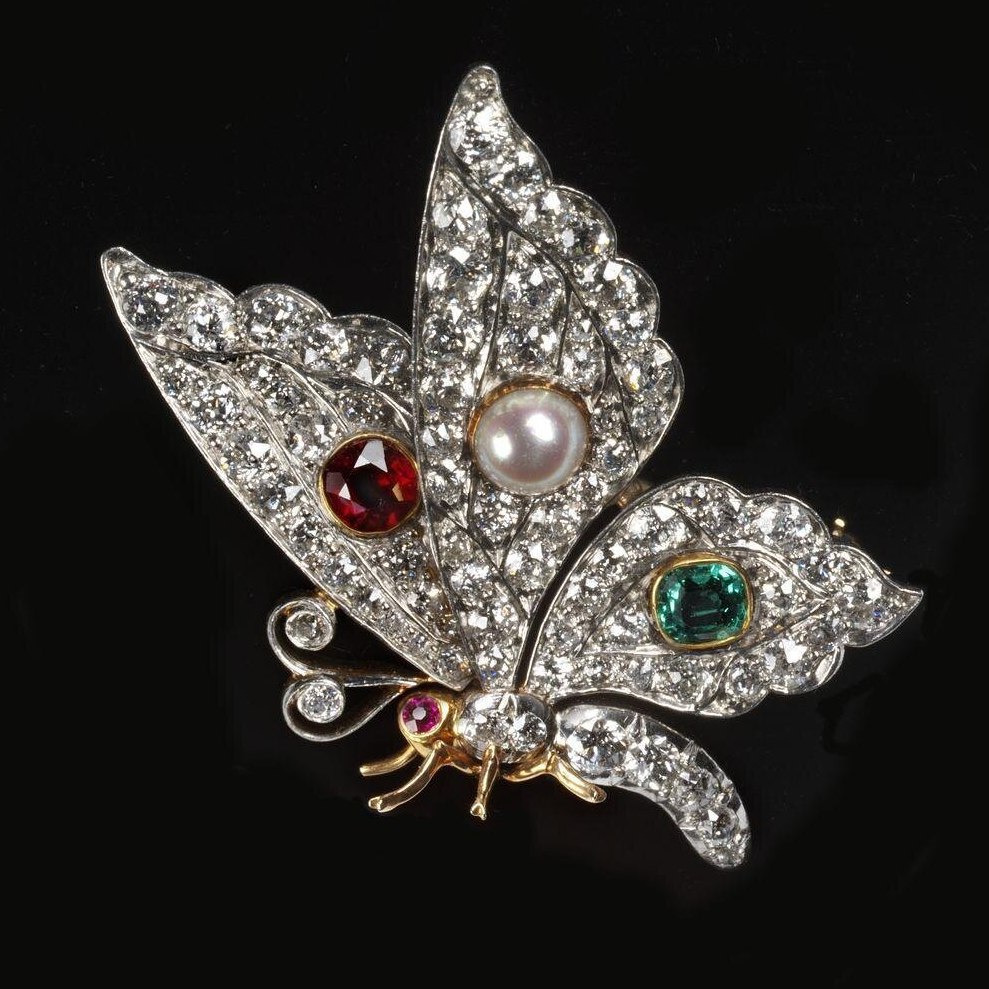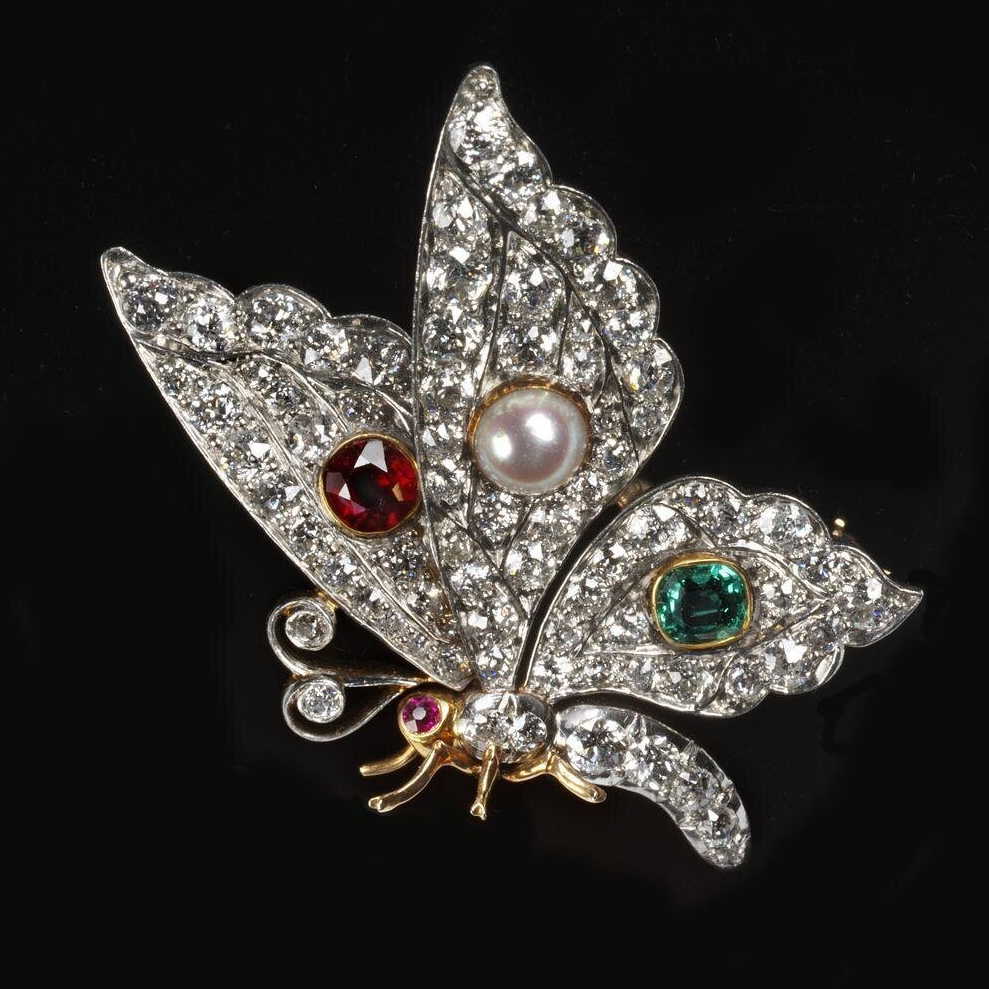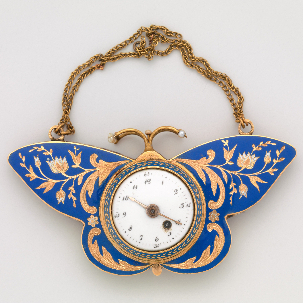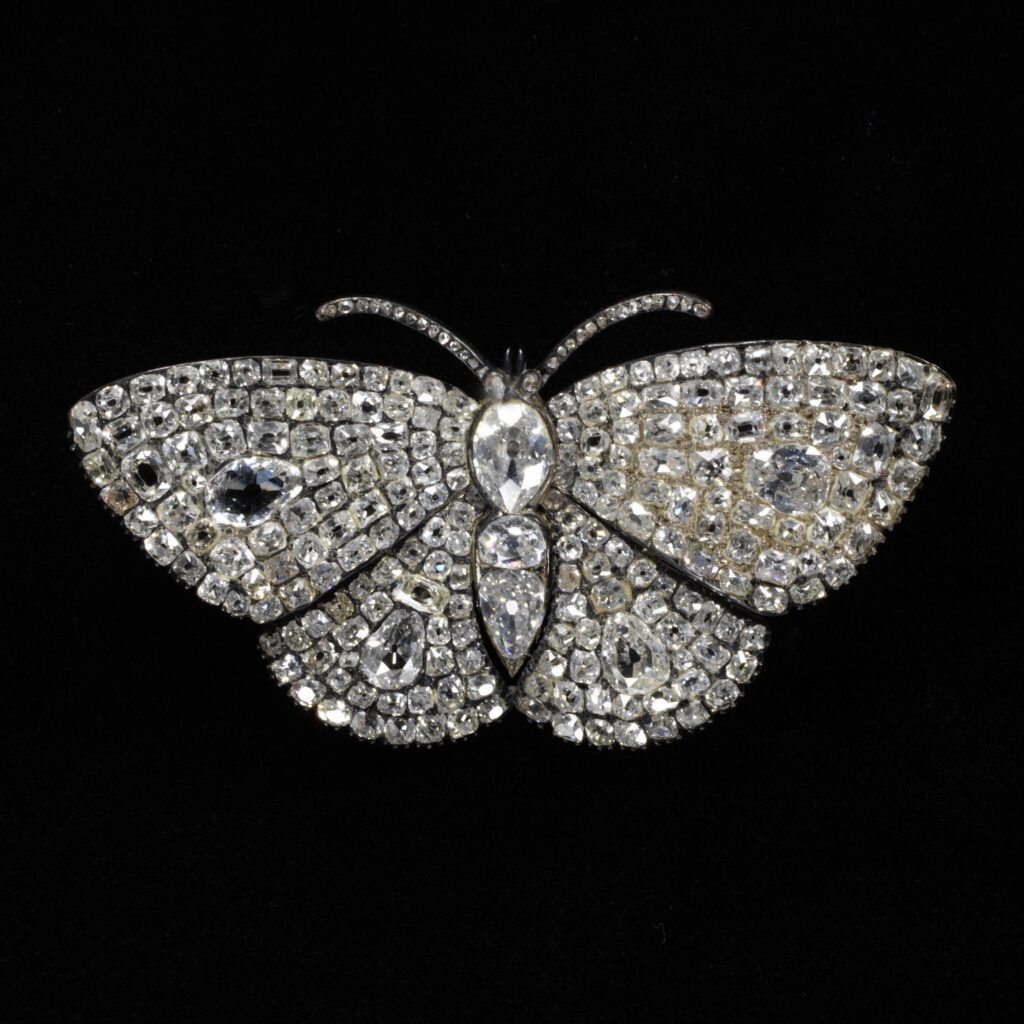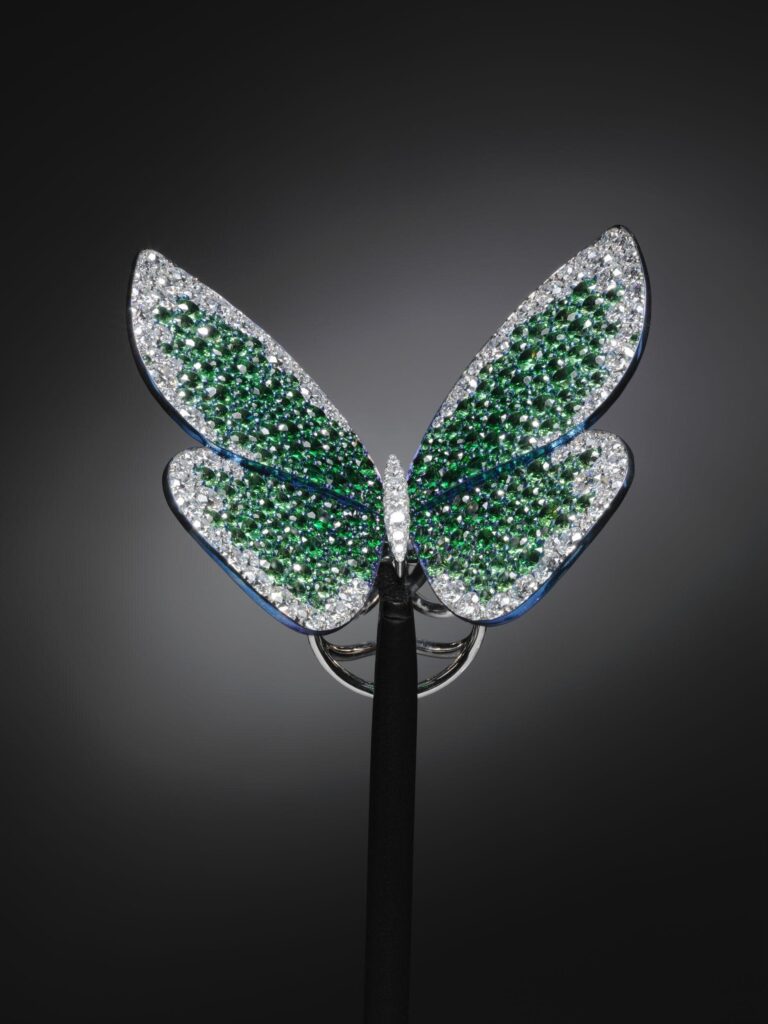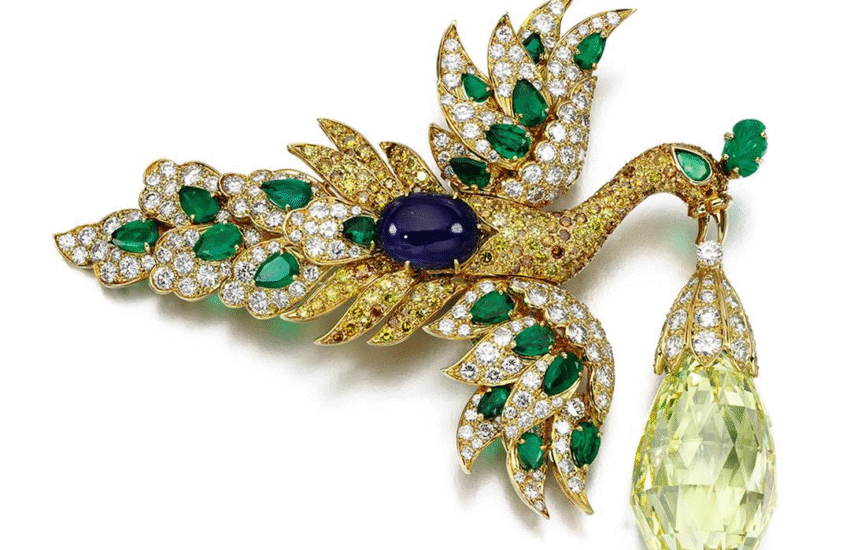B is for Butterfly: Understanding symbolism in jewellery
Delicate butterflies, colourful and fragile, fly onto brooches, pins, necklaces and bracelets. The butterfly in art and literature is a symbol of love, death and the resurrection of the soul. In the Greek myth of Pysche and Eros, the beautiful Psyche is often shown with butterfly wings, representing the metamorphosis of the soul after death. Just as the butterfly emerges gloriously from the chrysalis, so does the soul triumph over death. Understanding symbolism in jewellery and the many layered meanings of the butterfly motif lets us understand their historic and continuing appeal.
The fragility of life
The short lived butterfly symbolises the fragile nature of life. In Thomas Gainsborough’s tender painting of his two daughters chasing a butterfly, the butterfly is a reflection of the fleeting lives of children. Gainsborough had lost his eldest daughter in infancy and must have been very aware of the risks facing children.
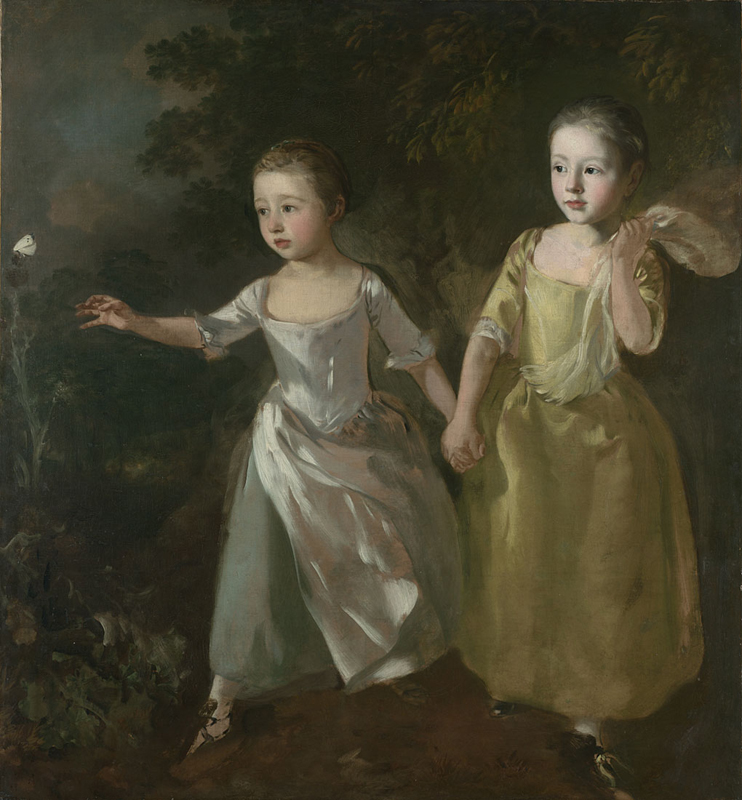

This gold locket symbolises the transience of love, whether in life or death. It’s set with a panel of plaited hair underneath a drooping rose. The inscription around the edge makes the meaning crystal clear: the flower fades, the butterfly flies away. The poem, which continues around the back reads:
I snapped it, it fell to the ground. And such I exclaim’d is the pitiless part, some art by the delicate Mind, Regardless of Wringing and Breaking a Heart, already to sorrow resigned
Adonis of love, faithless butterfly
In Mozart’s opera, The marriage of Figaro, the faithless lover is compared to a butterfly, flitting around and never settling.
You shall go no more, lustful butterfly,
Day and night flitting to and fro;
Disturbing ladies in their sleep
Little Narcissus, Adonis of love.

A small jasperware plaque by Josiah Wedgwood, perhaps intended to be set into a brooch, shows the pains of love. Two cupids stand over a flaming altar, singeing the wings of the butterfly, just as love can burn the heart of the lover.
Plaque, about 1780 -1800. Josiah Wedgwood’s factory, Victoria and Albert Museum.

The butterfly is the symbol of Psyche, the ill-fated lover of Eros/ Cupid. Psyche, shown here with butterfly wings in an enamelled ring by Charles Lepec, was married to the god of love but forbidden to see his face. Tempted by overwhelming curiosity, she lit an oil lamp and when discovered was punished. After her death, Psyche’s soul floated free, just as a butterfly rises from its chrysalis.
Naturalism in jewellery
Jewellery set with butterflies was inspired by an interest in natural history which can also be seen in the botanical prints which were popular around the same time.

Butterflies and moths were appealing because of the beauty and colour of their wings. Butterfly hunters caught them in vast numbers and pinned them to boards to form exhaustive collections. They also appeared in pretty, naturalistic 19th century jewellery.
Watercolour by Alexander Dyce, mid 19th century. Victoria and Albert Museum
The fleeting butterfly is the perfect choice for a pretty mid 19th century Swiss watch. The front of the watch is enamelled with blue flowers and the back is a carefully observed study of butterfly or moth wings, gorgeously rendered in coloured enamels.
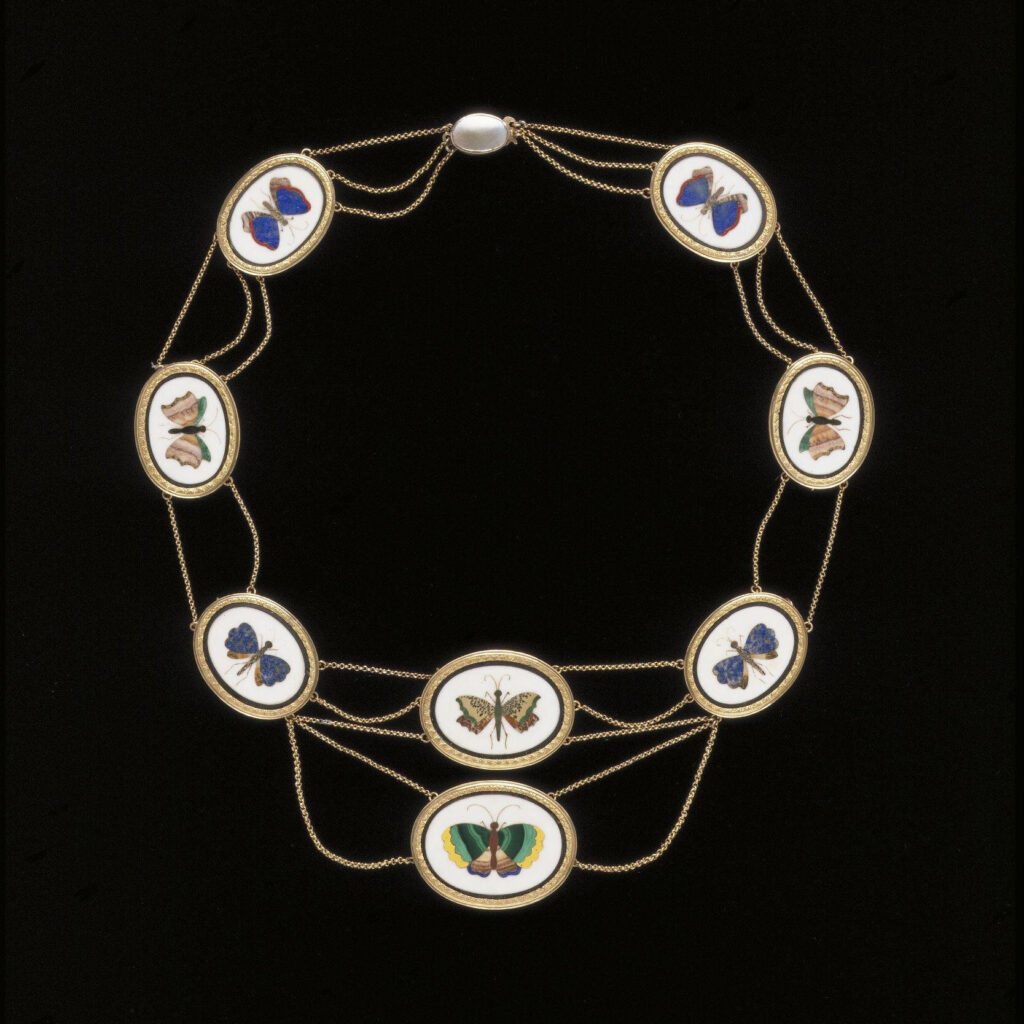
This necklace was made in 1810, around the time of the Regency in England and the First Empire in France under Napoleon Bonaparte. It is set with small panels made up of coloured hardstones in the shape of butterflies and moths. The panels were probably made in Italy as souvenirs for tourists and made up in Paris as a necklace.
Necklace with butterflies, around 1810. Victoria and Albert Museum.
The fashionable butterfly
‘Butterflies being the order of the day in our new fashions, this dainty winged tribe was well represented … a flight of diamond butterflies nestled in every fold of the skirt and corsage, a huge moth in emeralds and brilliants hovering above the soft snowy curls of the Louis XVI coiffure’.
Vogue, May 2 1895
In the 19th century, butterflies flew into all areas of fashion. Growing European expansion into South America, Asia and Africa led to the appreciation of increasing numbers of beautifully coloured butterflies. Butterflies were made into colourful jewellery, using enamels, gemstones and hardstones but also made into monochrome jewels, whether diamond or delicately cut steel or cast iron.
Art Nouveau butterflies
Butterflies and moths also appear in Japanese art, newly discovered in the Western world after the re-opening of the country to foreigners in the later 19th century. Japonisme swept the fashionable world through woodprints, ceramics and lacquered objects. In Chinese literature, the butterfly appears in Zhang Zhou’s dream.
Once, Zhuang Zhou dreamed he was a butterfly, a butterfly flitting and fluttering about, happy with himself and doing as he pleased. He didn’t know that he was Zhuang Zhou. Suddenly he woke up and there he was, solid and unmistakable Zhuang Zhou. But he didn’t know if he was Zhuang Zhou who had dreamt he was a butterfly, or a butterfly dreaming that he was Zhuang Zhou.
Zhang Zhou Dreams of Being a Butterfly, ca. 300BC
The butterfly symbolises human consciousness and our connection with nature.
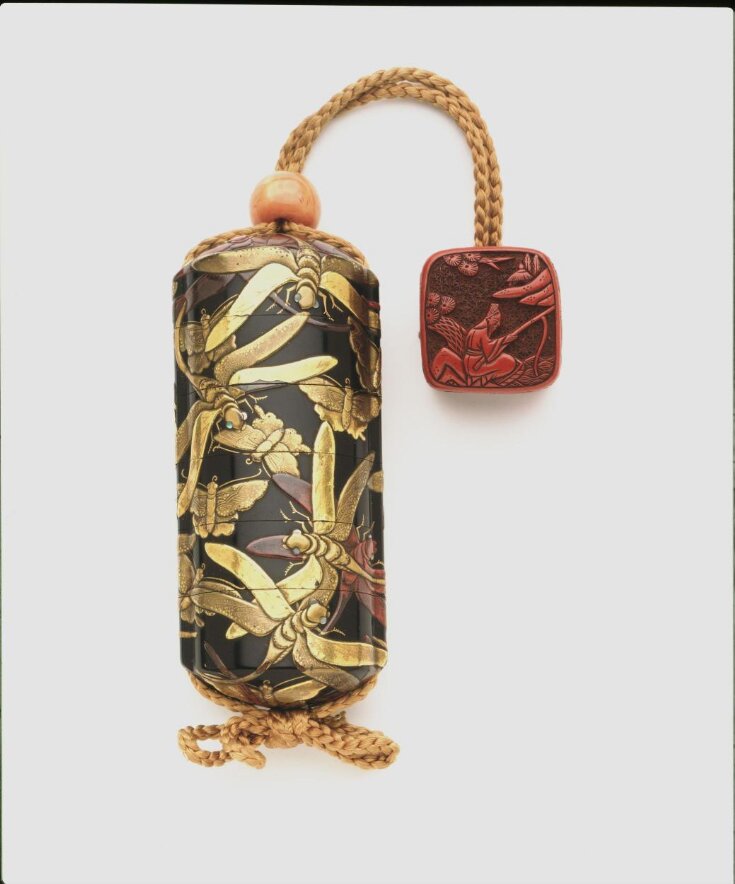
A little container or inro is sprinkled with a mass of butterflies and dragonflies in gold on a black background. These objects were a potent source of inspiration to the designers and jewellers of the Art Nouveau movement.
Japan, ca. 1870. Victoria and Albert Museum.
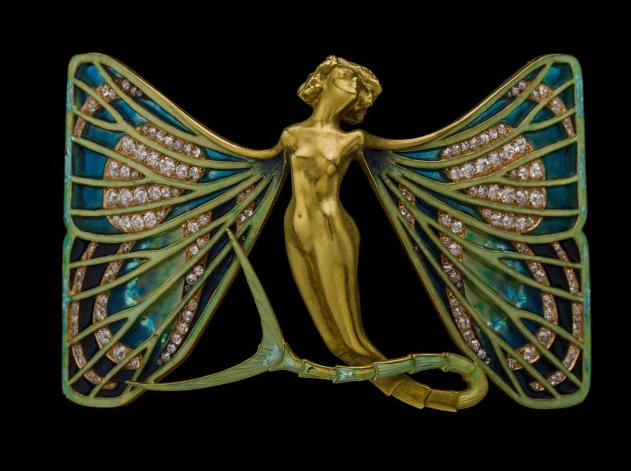
The idea of transformation is central to the image of the butterfly. Just as the butterfly changes from a caterpillar to a butterfly, Art Nouveau jewellers transformed women into dragonflies and butterflies. In a jewel made by Rene Lalique, the golden body of a woman is morphed into brightly enamelled and gemset butterfly wings.
Butterfly brooch Sylphide c.1900
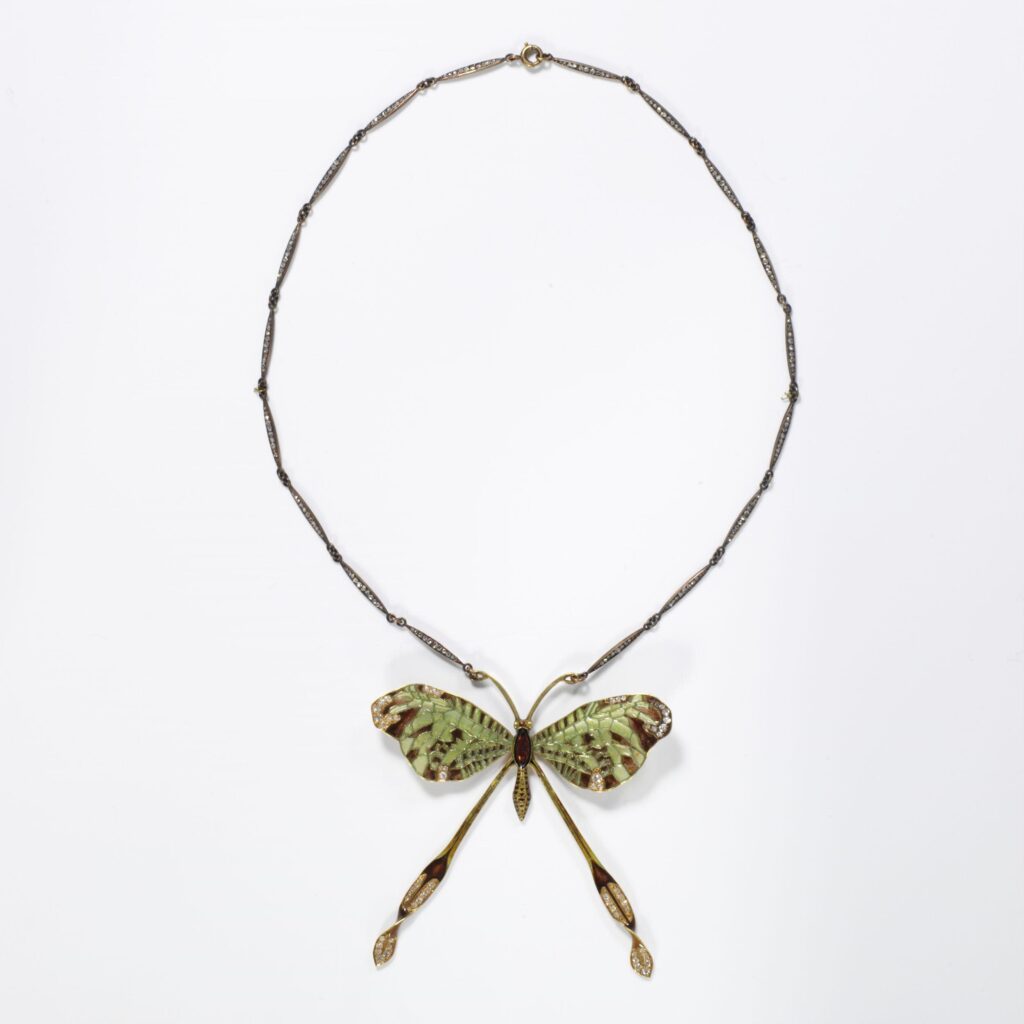
An enamelled and diamond necklace by Lucien Gaillard is set with a pendant of a butterfly or dragonfly. The wings are patterned with coloured enamels, set with small groups of sparkling diamonds.
Necklace by Lucien Gaillard, Paris, ca. 1900. Victoria and Albert Museum.
Art Nouveau butterflies fitted into a fashion for nature inspired jewellery. Jewels in the form of spiders, dragonflies, beetles and grasshoppers were fashionable in precious metal and costume jewellery.
The modern butterfly jewel
Butterflies appeal to contemporary jewellers just as much as to their predecessors. A tsavorite and diamond ring made by jeweller Glenn Spiro for the singer Beyoncé, is cleverly articulated. A mechanism incoporated into the band allows the butterfly’s wings to flutter.
British jeweller Fred Rich uses the vast variety of moth species for his elegant jacket pins. And, Chinese sculptor and jeweller Wallace Chan has made the butterfly one of his principal motifs.

Just as the butterfly flitters and dances above the butterfly hunter, butterfly jewels have continued to be popular. The image of the light, free butterfly appeals to the modern jewellery wearer, as it has for hundreds of years.
Understanding the symbolism of jewellery allows us to appreciate jewels in a new way and to know what meanings they held for their makers and wearers.
‘Papillons’, George Barbier, 1922. Rijksmuseum, Amsterdam.
Further reading
Understanding symbolism in jewellery: A is for Anchor, M is for Moon, or S is for Skull.
